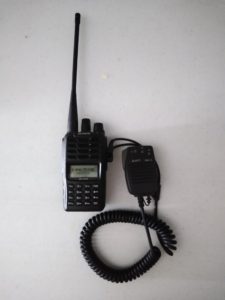
Amateur Radio Code was written by Paul M Segal W9EEA in 1928
Amateur Radio Code
Considerate – Never knowingly operates in such a way as to lessen the pleasure of others.
Loyal – Offers loyalty, encouragement and support to other Amateurs, local clubs, and the American Radio Relay League, through which Amateur Radio in the United States is represented nationally and internationally.
Progressive – with Knowledge abreast of science, a well-built and efficient station and operation above reproach.
Friendly – slow and patient operating when requested; friendly advice and counsel to the beginner; kindly assistance, cooperation and consideration for the interests of others. These are the hallmarks of the amateur spirit.
Balanced – radio is an avocation, never interfering with duties owed to family, job, school or community.
Patriotic – station and skill always ready for service to country and community.
Written by Paul M Segal W9EEA in 1928 Amateur Radio Code
A Brief History Of Amateur Radio
After Hertz’s detected and measured the properties of electromagnetic waves predicted from Maxwell’s equations, and Morse’s inventions, Marconi was convinced he could transmit signals by electromagnetic waves.
Using a transceiver and a transmitter he was able to transmit CW signal over water. In 1897 he founded the Wireless Telegraph and Signal Company. He gave a demo to the Italian government where wireless signals were sent over a distance of 12 miles.
In 1899 Marconi used wireless communication across the English Channel between England and France.
Meade Dennis installed at Woolwich Arsenal on the Dartford to London route is considered today the first amateur radio station experiment.
Marconi took advantage of Tesla’s discovery on coils that were able to transmit electricity by air. And Flemming developed the first vacuum diode and four years later he invented the tungsten filament.
In 1908 the magazine Modern Electrics was first to dedicate a magazine to wireless communication.
By 1910, the term “no wireless” was not used anymore, and both professionals and amateurs moved on to the power of “wireless.”
Today we’re on CW, phone, SSB, FM, packet, TV, PACTOR, PSK31, RTTY, and other modes, bouncing signals off the ground, ionosphere, and the Moon.
